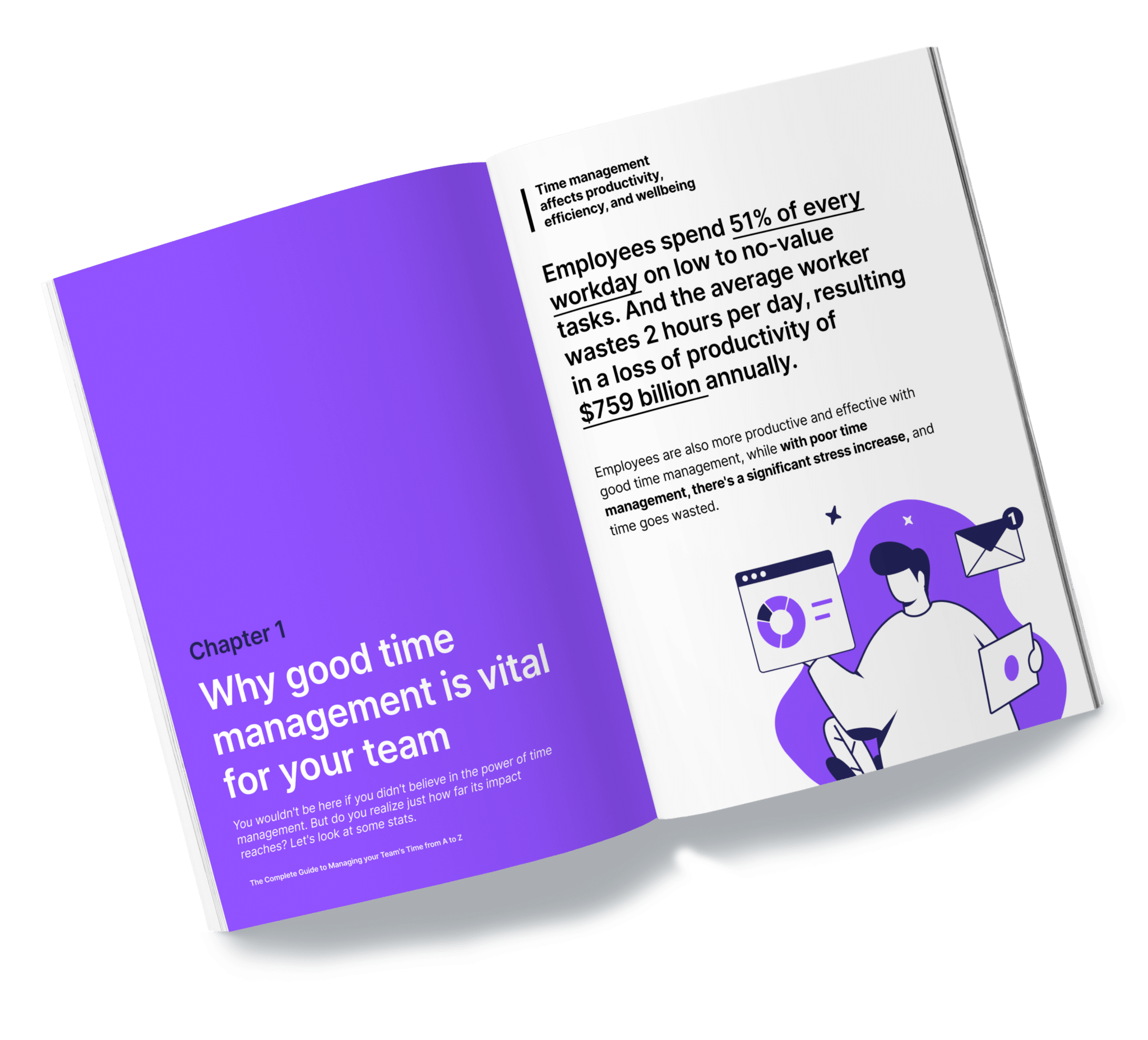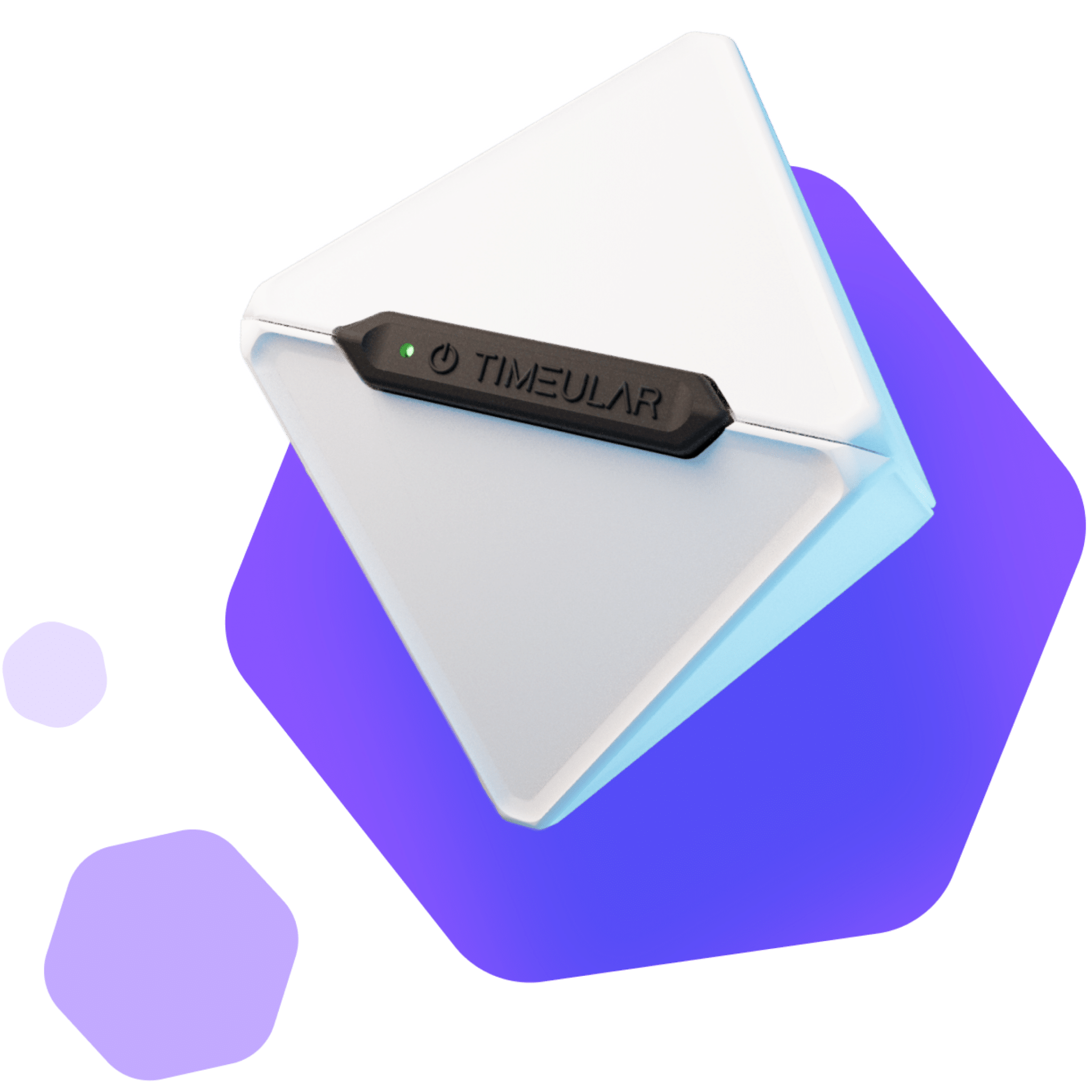How to Increase Productivity: 16 Practical Tips
Increasing productivity is the ultimate goal for every company and professional nowadays.
Being a common measure for an entity’s (and a worker’s) growth and development, it’s a factor that’s highly taken into consideration. Individual improvement in productivity will result in team improvement as well.

Free eBook: How to work smart, not hard
Get your free copy to discover top productivity tips for teams and their leaders
Sometimes, the search for productivity can become less than sustainable. People are driven to burnout if not guided on a good path toward productivity.
The strategies and tips presented here are all focused on finding a balance between effective ways to increase productivity and work smarter. Know how to boost your productivity.
How to increase productivity
1. Make use of productivity trackers
This is one of the best ways to increase productivity because you’re going to measure how you spend your time!
Use all the tools available to you, but make special use of productivity tracker apps, such as Timeular.
These tools are very helpful for assessing the situation: they’ll help you know your work rhythms and needs, by tracking how long a specific task takes and it helps you make sure you’re complying with your goals. Measuring time is a habit you can develop to be more and more productive in the future.

Track your time with a physical Tracker
Build a habit using muscle memory and a powerful physical reminder. All new users get 2 months free subscription when connecting a new Tracker.
2. Be clear about what you have to do
There are a lot of ways to increase productivity. Let’s start with the basics.
Productivity in the workplace or during work hours depends on many elements of your daily life. The more you prepare ahead of time, and get clear on exactly what it is you want, need, or should do, the easier and faster you will move once you start.
People who struggle with being and staying productive often skip this preparation phase.
Preparing a to-do list, having a planner (analog or digital) to schedule meetings and tasks, and using techniques such as time boxing can be helpful.
Organize your schedule and use a time tracker in order to ensure you accomplish tasks in the right amount of time. In your personal life, make sure that things are organized in a way that can help you avoid distractions.

3. Stop multitasking
You’ve probably heard this before, and hopefully, you believe it by now: multitasking harms your productivity.
Juggling many tasks simultaneously is not as productive as it may seem. By focusing on one task at a time, that task will be completed to a more elevated standard and in less time, enabling you to move seamlessly on to the next task. By multitasking, you’re wasting energy and time.
4. Enter into deep work
Deep work is the opposite of multitasking or constant context-switching. In deep work mode, you intentionally dedicate all your focus to one task at a time, which brings multiple benefits such as faster task delivery, more diligent work, or improved creativity.
Schedule a deep work session every day to ensure that at least two or three hours a day are spent 100% productively. To manage your time during a deep work session, use our free Pomodoro timer, which will automatically track the time of your work and break sessions.
5. Set realistic goals
Don’t sabotage yourself from the start. Productivity does not exist on a static playing field.
Large projects can easily become intimidating, even if they don’t look like that at the beginning. Goals need to be understandable and attainable, but mostly they should be clearly defined.

Start tracking your time to maximize your productivity
Ask yourself if you have the resources available to accomplish what you need to and break your tasks into manageable smaller ones. You’ll be completing tasks, reaching goals, and feeling more productive overall.
TIP: Get to know different prioritization techniques you can use to increase productivity.

6. Learn to prioritize tasks
Knowing how to prioritize tasks is another way to increase your productivity. You just have to identify the most urgent work that needs to be done in a very clever strategic move that helps boost productivity.
You can prioritize things in several different ways. You just need to follow the method that works best for you. For example:
- Prioritize per due date.
- Prioritize per urgency.
- Prioritize per importance.
There are several methods to organize your workload. Did you know that inadequate prioritizing is responsible for work overloading? So, pick one and try it!

Free eBook: How to work smart, not hard
Get your free copy to discover top productivity tips for teams and their leaders
7. Do the hardest things first
It is tempting to avoid difficult, harder, and time-consuming tasks, by the truth is that by taking on your most difficult projects first, you’ll increase your motivation and focus for the rest of the day.
We’ll circle back on this point but try to get these bigger and more consuming tasks at the time of day you are the most productive. For most people, that’d be first thing in the morning.
Have you heard of the Eat the Frog technique? Named after a Mark Twain quote, “eat a live frog the first thing in the morning, and nothing worse will happen to you the rest of the day”, this technique translates to starting the day by doing the “worst” of your tasks. The “worst” will be done sooner rather than later, and the rest of the day will seem easier to tackle.
8. Delegate when needed
If you’re a team leader, this point is even more important, but even if you work alone, you may have to consider outsourcing.
Doing this will allow you to focus on your higher-impact projects. Plan and align the tasks that are important and urgent for yourself to work on and those that, while not so important, still need to be done, to delegate.
If you’re struggling with delegation, read your post and learn how to master task delegation.
9. Limit your distractions
Becoming distracted while working or procrastinating, is very normal, and focus doesn’t always come naturally. But, honestly, we all could put a little more effort into fighting distractions. Turn off your phone, select flight mode, and use focus mode apps or techniques such as Pomodoro.
The Pomodoro technique is commonly used to prevent distractions and complete tasks. Using a Pomodoro timer, set timed sprints of 25 minutes. During this block of time, you’ll focus on the task. Knowing that you only have to focus for a shorter period is an excellent way of practicing your ability to focus for more extended blocks of time.
Read also: The best alternatives to the Pomodoro method
10. Set reminders
Setting reminders on your phone or your productivity app. Having a list of reminders is very helpful if you quickly state the specific actions that you need to take and why they’re important.
This means that it’s fundamental to give your reminders some context, as it’ll be faster to identify what’s needed to take action and be more productive.
11. Make sure you’re taking breaks
Being “productive” does not necessarily mean sitting still for eight straight hours. It’s possible to do that for a day or two, but a person isn’t and cannot be a robot. Eventually, you’ll burn out.
Productivity is all about flow. It’s about knowing your limits and being conscious of how to move within your own constraints.
Maybe you need to take 10-minute breaks after every 50 minutes of focus. Or maybe you can work for four hours no problem, but then you need to take the afternoon before diving into another work session.
Being productive cannot be based on someone else’s habits or way of doing things. This is about knowing yourself and using your habits to your advantage. One exception that can be sustained, is that when you’re going through a good flow, a state of effortless and effective productivity, it’s best not to interrupt yourself.
Did you know that taking breaks help to reduce stress? Find out the most common causes of stress at work.
You can also try the five-minute rule. It works by promising to spend just five minutes on a certain task. This way, you eliminate many of the excuses that stop you from even starting the sometimes dreadful task at hand. Almost anyone can dedicate just five minutes to writing an email, replying to messages, outlining something, or organizing notes, just to give a few examples.
The technique is helpful because, usually, once the five minutes are finished, the motivation to continue stays. Even if you move on to another productive task, the small jobs completed within the five minutes are a big contribution to your overall motivation and productivity mindset, since the smaller tasks are the ones we put off the most.

12. Share what you’re doing to get feedback
Feedback is extremely important, and a lot of time can be saved by a single conversation where someone points out, very clearly, something that isn’t working as it should. It might not be easy to hear at the moment, but you will be thankful for it later.
Receiving feedback and putting it into action is important for everyone to grow, in career terms and personally. Constructive criticism helps increase productivity since it’ll help you avoid mistakes and wasting time in the future.
13. Schedule the work day strategically
We all have different rhythms. Some people are super productive as soon as they wake up, and others are night owls. Whatever you prefer, you just need to have it work in your favor. Take note of when you’re most productive at work, and schedule the most difficult tasks for that period.
If you’re affected by the famous post-lunch energy break, use that time to perform tasks such as checking emails, cleaning your desk, performing administrative tasks, etc. “Easier” things that don’t demand 100% of your focus.
Flexible and hybrid working has promoted the concept of working and has indeed promoted flexibility and productivity. People are responsible for their own time and schedule.
Some employees work best in the morning, while others hit their productive stride after lunch. Now there is more freedom to act upon this: identifying when you are most productive and organizing your daily schedule to make the most of these peak energy times is an excellent way to increase productivity.
Read also: How does remote working affect productivity?
14. Discover the productivity app that works for you
We reached the part of this list of suggestions that must be put into practice over time when you reach a strong pace in this path toward a state of being organized.
Once you find the best calendar, the best free digital planner, the best marketing tool, the best note-taking app, and the best time tracker, keep them. Use them well, they will be your best friends.
Enjoy the free trials and keep experimenting until you find them.
Read also:
15. Create a routine
There is absolutely something to be said for keeping a routine. As soon as that hour strikes, you train yourself to know to fall into that mode of focus required to do your best work. Consistency is what you’re after and is a key factor for higher productivity.
Trying to be productive when one day you are working in the morning, the next day you’re working at night, and the next day you’re working in the middle of the day, gets exhausting.
A routine is beneficial, and inherently removes the distraction of adjustment to something “new”.
Think about creating a routine that adds structure and a sense of predictability to your day. It won’t work out perfectly every day, since things happen unexpectedly, and that’s it.
What you need is a basic structure for when you wake, eat, work, do activities, and sleep, which can help you feel less stressed out and more organized.

16. Keep your workspace clean and organized
A good way to keep a clear mind and a productive streak is to keep your workspace clean. Put everything away in its place and only leave what you need to do your work.
If you work from home, decorate and organize your space strategically, according to your liking. It’s smart to be minimalist and avoid clutter, give it a try. Clean space, clean mind! And the same logic applies to your virtual workspace.
Did you know digital clutter can work wonders in reducing anxiety and improving your work life? You’ll feel motivated, and with that, you’ll be more productive while also avoiding stress. Take some time to organize your files, read pending messages in your inbox, check notifications in work software, etc.
Conclusion
These are some of the best ways to increase productivity. It doesn’t mean that all of them will work with you. You need to try and find what works better for you.
Nobody is productive in the same way, and if you’re someone who’s trying to be more productive don’t try to overcompensate right from the start.
Focus on trying one or two of these productivity tips at a time. Developing them as a habit makes it possible for anyone to develop skills in this area, reducing stress and reach personal and professional goals.
An important concept to keep in mind and take seriously is setting boundaries. It’s good to show some flexibility, volunteer for extra work, and be proactive, but the lack of limits at work can hurt your productivity. Setting boundaries stops you from becoming overwhelmed.
Balance and consistency as the two notions that should guide your work days.
You might be interested in: